Last week I talked about the mitzvah (good deed) I was doing for two women—helping both of them sell the 2002 owned by their departed husbands. One sale I was handling directly; the other I was just advising on and publicizing. Things moved forward with both cars.
Pam is the woman selling the Malaga ’76 2002 that belonged to her husband, Robert Gilday. It’s an absolutely beautiful car, fully restored, stunning outside, inside, underneath, and under the hood. It’s got a very cool combination of the exterior being bone-stock except for the factory alloy FPS wheels, and the engine being hot-rodded with high-compression pistons, dual Webers, and a hot cam. I looked at the car and drove it a couple of weeks ago, and the only things wrong with it were that the alternator pulley was coming apart and the directionals weren’t working due to a faulty hazard switch, both of which she has since had repaired.
My role with Pam’s car was to advise her with regard to photography, collect what she sent me, and float it for sale on my Facebook page. She sent me a few batches of photos. The older pics of the car, during and just after restoration, were fabulous, but the current ones were uneven. I advised her to wait for a clear, sunny day so the sun would make the Malaga paint pop, take the car out to an open space such as a field or a parking lot, and snap at least 30 picturess of the exterior, interior, and under-hood area. Due to a technical email glitch, the pics she initially sent me were only 640×480 pixels, but with a resend and a properly checked size option, they all arrived in full resolution. I wrote a short description describing the car and explaining that I had actually seen and driven it, and put it and the photos up on my Facebook page.
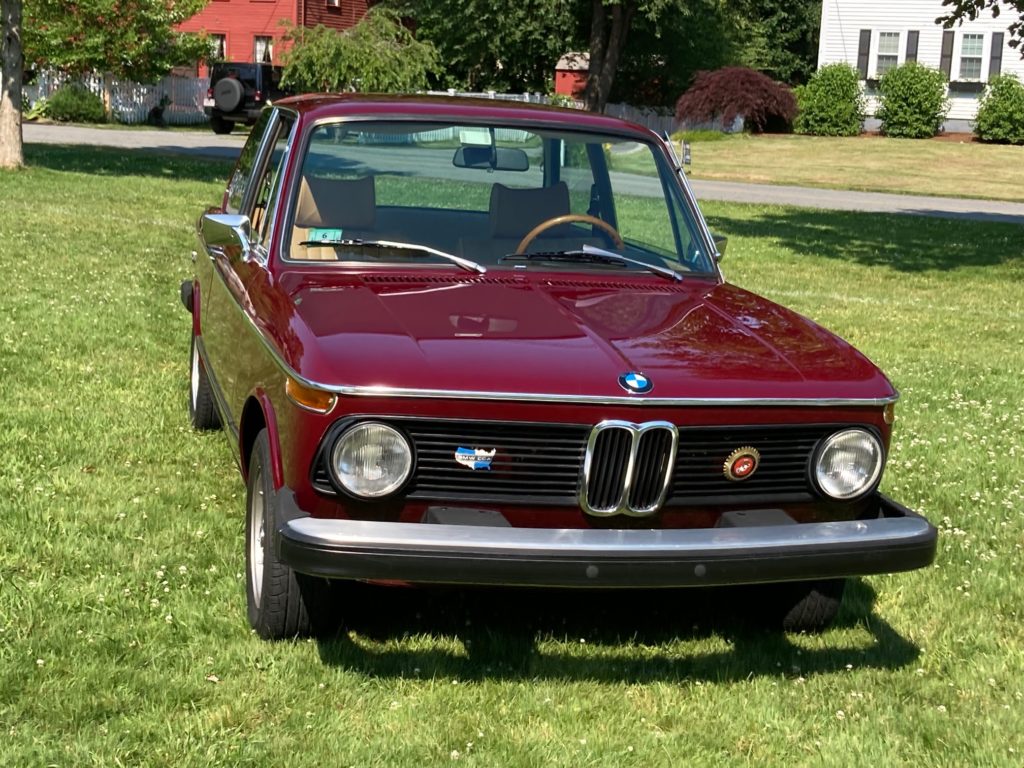
Once the car was photographed outside in direct sun, the photographs did what they were supposed to do.
For the asking price, we listed the value included in a recent appraisal: $31,000. I didn’t really think too much about it. I’m not an appraiser, and I steadfastly refuse to answer “What’s my 2002 worth” questions, instead telling people that what they need to do is look on eBay and Bring a Trailer for what cars in the same condition as their cars actually sell for (and I add that you have to be mercilessly honest with yourself regarding this question of “in the same condition”). If I were handling the sale myself, I’d go through this process, but I wasn’t. I did notice that the appraisal listed the low, medium, and high values for a ’76 2002 listed in the NADA guide, and commented that NADA wasn’t really the best source of information for classic-car values—a site like Hemmings or Hagerty would likely be better. But other than that, the appraisal seemed to be detailed and credible. And for a square-taillight non-tii, $31,000 seemed to me like a fair chunk of change.
Three things happened after the ad for the car hit my Facebook page. The first was that people were absolutely wowed by the photos of the car. The second was that a number of people from the Nor’East 02er group commented that they knew Robert (Bob) Gilday, didn’t know that he’d passed away, expressed sympathy to Pam, and vouched for the condition of the car.
But the third thing involved the comments: They strongly slanted towed the opinion that the $31,000 asking price was significantly low. Barney Toler, who has become something of a legend restoring cars out of his house near Austin, Texas, said “That’s a $45,000-plus car all day long.” I took Barney’s comment very seriously. While I wasn’t representing the car for Pam, and had no direct fiduciary responsibility to her, I advised her to take a step back and not to sell the car to the first person offering her $31,000.
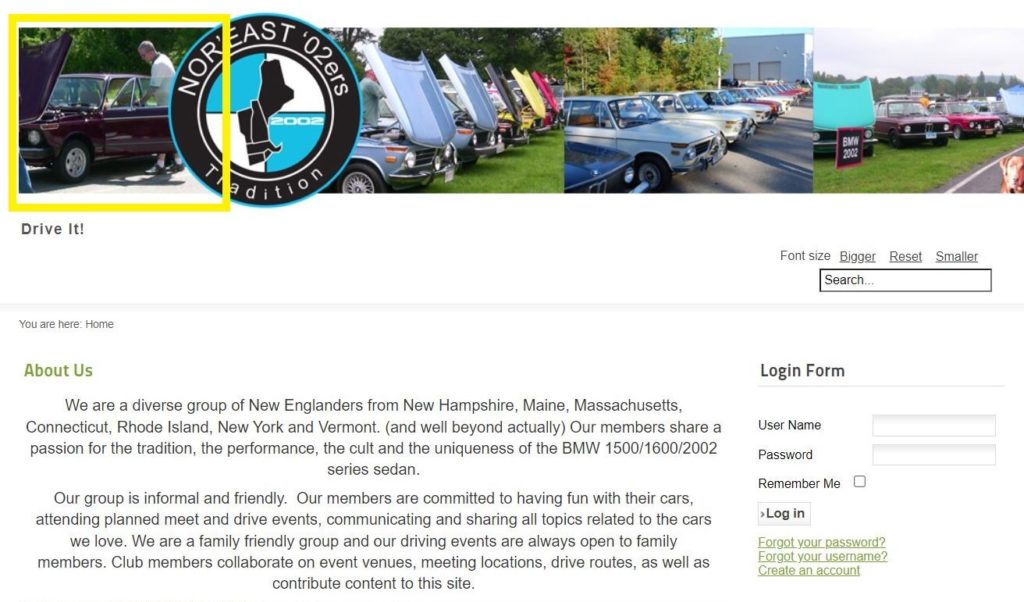
It was very surprising and moving to Pam to check out the Nor’East 02ers web page and see a photo of her husband, Robert, and his car.
I tried to talk her into putting the car on Bring a Trailer, since I thought it would do very well there, but I also explained that a more complete level of photography would be necessary (e.g., it wouldn’t be good enough to post old photos of the restored undercarriage and say, “I’ve crawled under it and it still looks pretty much like this”), and that more details of the restoration would be required, such as when the work was done and exactly what engine modifications it had. Pam said that, unfortunately, she never found a folder of her husband’s receipts for the car. This, combined with the weeks-long BaT process, made her hesitant to rely on BaT.
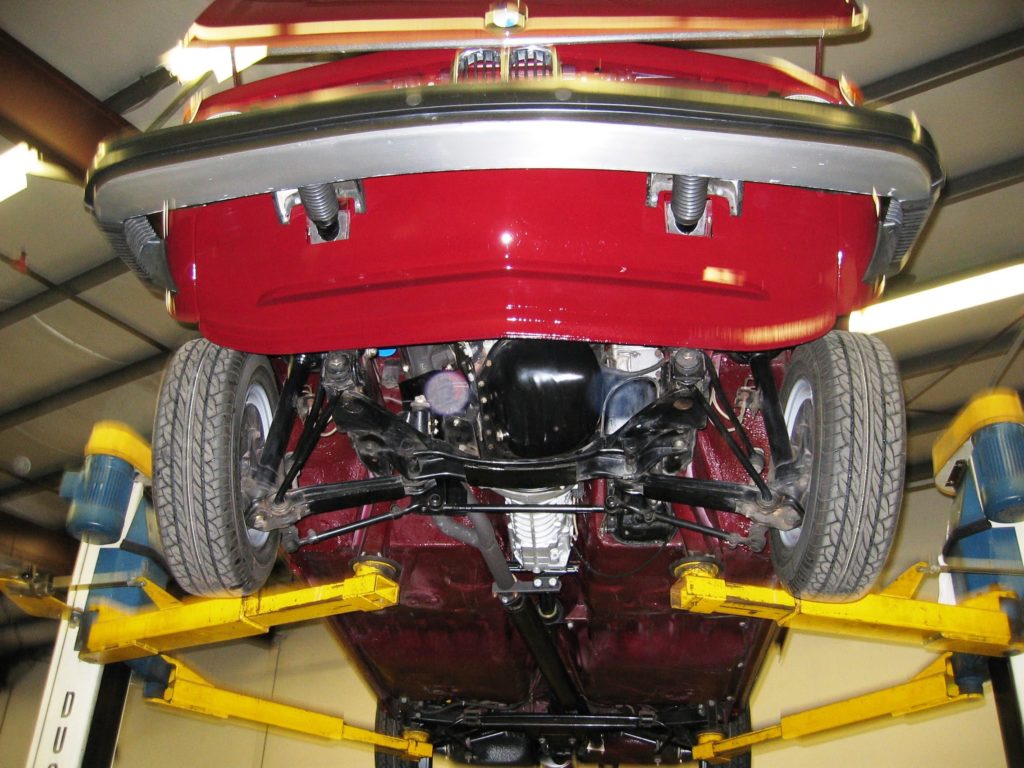
This was a great undercarriage pic, but I had no idea when it was taken.
“Can we just split the difference?” Pam asked me. “You say the $31,000 appraisal value is too low, and that this guy in Texas says it’s worth $45,000. Can you post it for $38,000?” So I did—but I also said that if I were to bet, I’d wager that we would wind up having to put it up on BaT.
I was wrong.
Facebook friend and good guy Bob Ball messaged me saying, “I have a guy who was looking for a Malaga car; he thought he wanted mine and had a PPI done, and didn’t buy it (it was too rough). But the one you just posted looks fantastic.” Bob sent the potential buyer the link to my first Facebook post with the description, photos, and all the great comments in it, and put him in touch with Pam. The buyer then called me, as I had actually seen and driven the car. It looks like it’s a done deal; papers are being passed. Pam got what she wanted for the car without having to wait weeks to go through the BaT process, and the buyer got a great car at what was likely a lower-than-BaT price.
So, mitzvah #1: accomplished.
Mitzvah #2, helping Jim Zanfagna’s wife, Chris, sell his ’72 2002tii, has turned out to be a bit more involved than I expected. Jim, a long-time Boston chapter CCA member, was the original owner of the car. When I first saw the car a few weeks ago, it ran and drove, but had a trifecta of needs. First, it needed the directionals fixed in order to pass inspection, and unlike Pam’s car, the problem wasn’t just the hazard switch. Second, the clutch hydraulics were leaking, and the brake pedal travel was so long that something was clearly wrong with the rear brakes. Third, there were a number of easily correctable under-hood issues where a few hours of work would forestall the old Invasion Of The Body Snatchers point-and-howl from the BaT peanut gallery.
Even though I don’t really work on cars for other people, I was the best person to deal with all of these issues, so I took delivery of the car as part of an agreement with Chris to represent it and sell it for her (at my special mitzvah I-should-have-my-head-examined price).
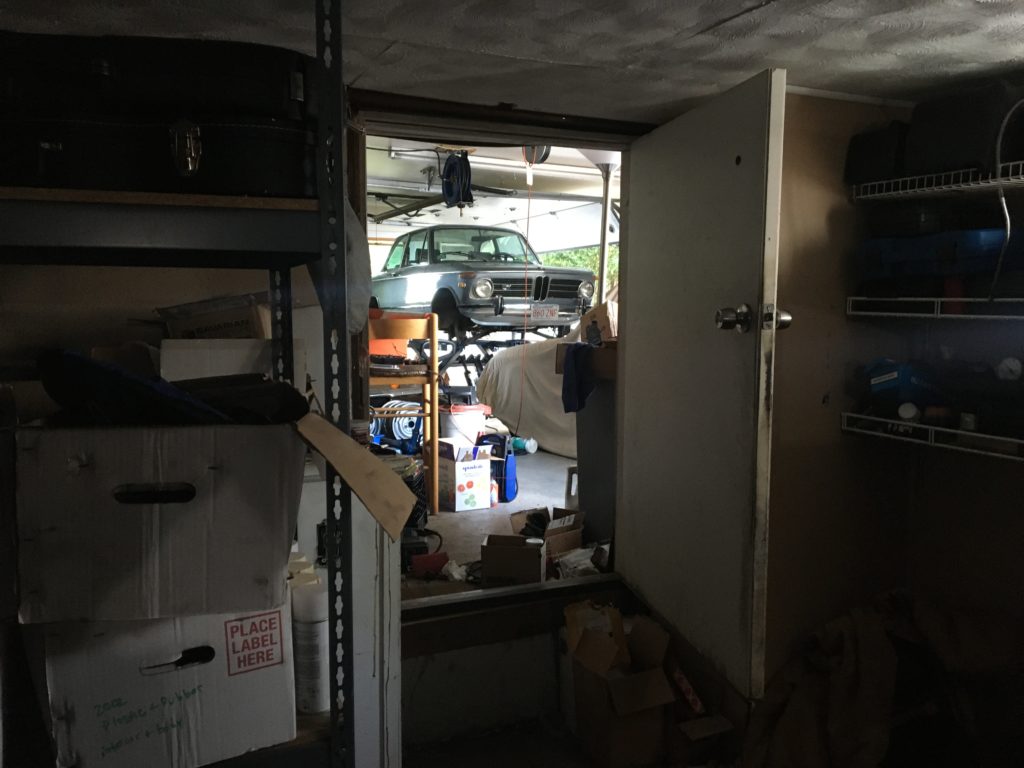
It’s very rare that someone else’s car occupies space in my garage, much less on my lift, but when you offer to do something, you need to see it through.
To no one’s surprise, this resulted in a slide down the Great Automotive Slippery Slope.
Part of the story of Jim’s car is that about twenty years ago he suffered a fall resulting in chronic pain, and likely as a result, his use of the car fell off dramatically, restricted to a few short stress-busting sessions a year. So while the car was driven regularly during the last twenty years, it wasn’t driven much, and a number of maintenance issues piled up. In addition, although the car had had some serious mechanical and body work, it never had the kind of systematic restoration that Robert Gilday’s car had, so there were some odd surprises.
I knocked out the rear-brake replacement, installing new shoes, drums, and wheel cylinders, although this work was interrupted by the fact that the rear adjusters were seized, requiring a liberal application of heat and wax to free them up (see this post I wrote on bmw2002faq.com on the details).

Not only pretty, but adjustable!
The new clutch master cylinder and slave went in without incident, as the clutch slave was mercifully free of the corrosion that usually affixes it with a death grip to the bell housing. The vent pipe between the valve cover and the airbox was split in several places, and someone had tried to patch it together with hose clamps and a barbed coupler. I ordered and installed a new hose.

Yum, new clutch hydraulics.
But the biggest surprise had to do with the play in the accelerator linkage. Tii’s use several ball-in-cup linkage rods to synchronize the opening of the throttle body with the fuel delivery from the Kugelfisher injection pump, and these were worn. I replaced them with good spares I had. This lessened the play, but there was still a lot of slop in the non-injection part of the linkage. I found that most of it was coming from the lever that comes down from the pedal bucket. I’ve seen this before; sometimes the hole at the end of the lever gets worn into an oval shape. I pulled it apart, and found that that was indeed the case.
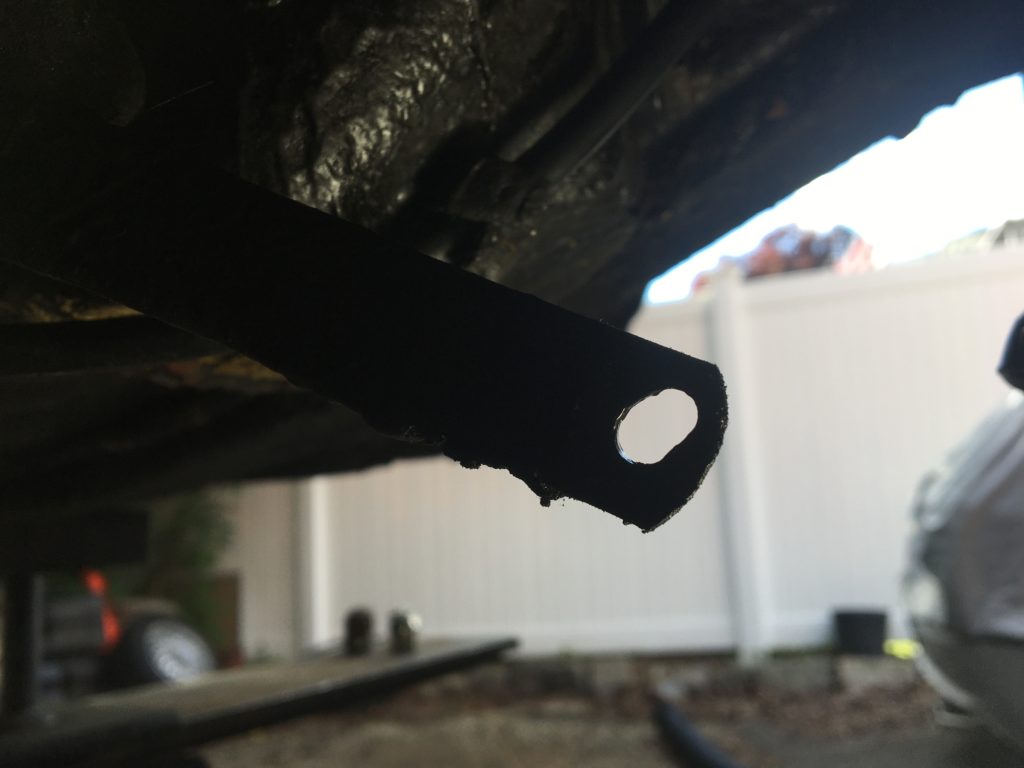
That hole is supposed to be round, not oval.
However, when I disassembled it, I saw something I’d never seen: A deep notch had been worn at the end of the linkage rod as well.
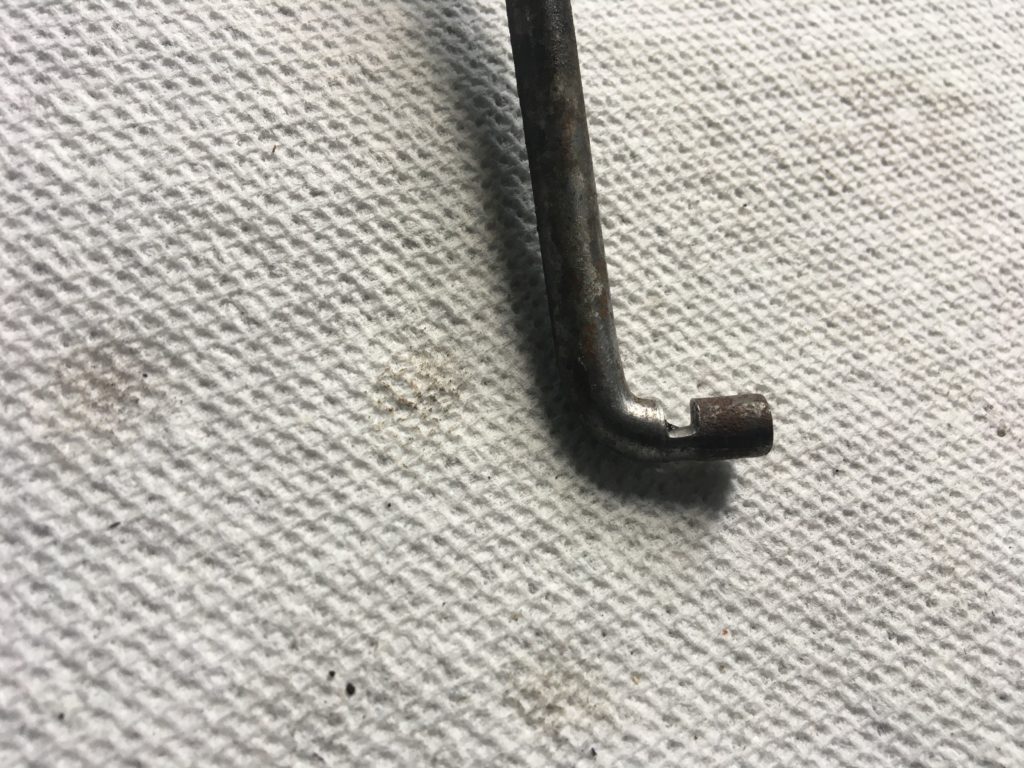
Yikes!
I looked around in my box of spares, and had neither the lever nor the rod. So I took some J-B Weld SteelStick, worked it into the notch in the end of the rod, found a drill bit the same 0.31-inch diameter as the rod, put it into the ovalized hole, worked the SteelStick around it, withdrew the bit, let the SteelStick harden, then sanded both pieces smooth.
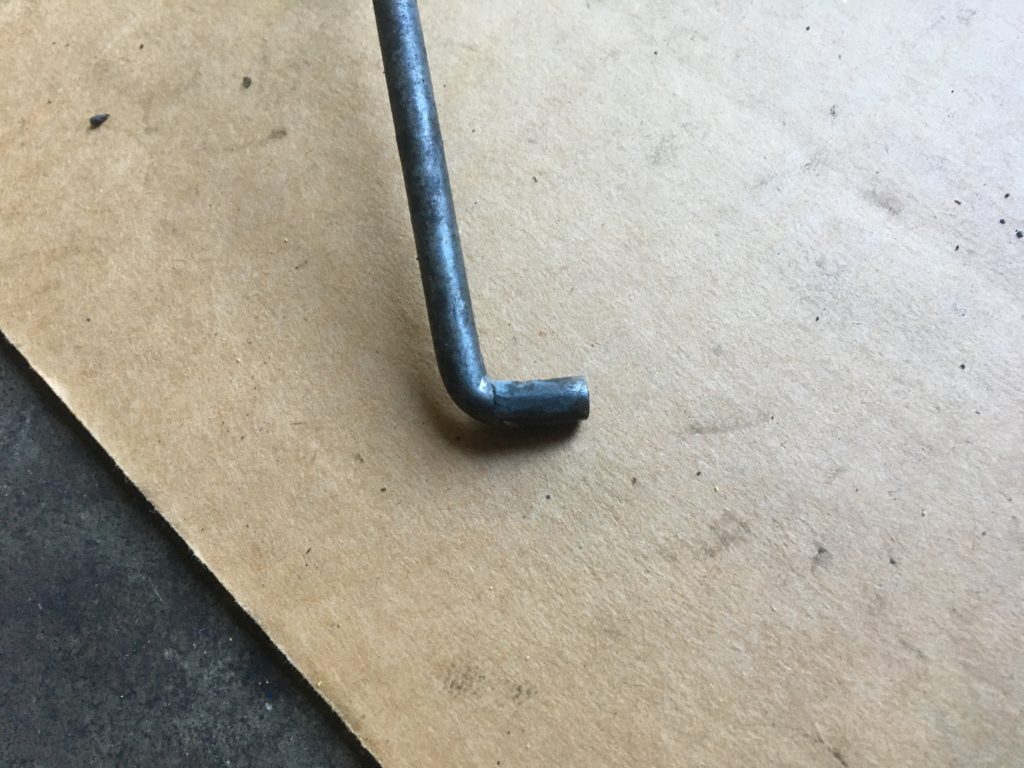
The notch filled…

…and the oval hole made round again.
In the engine compartment, the fuel-hose-routing and battery issues were howl-worthy. I believe what happened was that during the rust-remediation work, someone used a battery tray that had the threaded nut for the battery hold-down clamp on the rear-facing edge of the tray instead of on the right-facing edge. This inspired whoever did the work to use a Group 22 battery that had the little clamping protrusion on the back edge instead of on the side. This battery was larger than the tii’s original little group 26R battery, and it probably hit the little bracket that holds the fuel filter to the upper left corner of the radiator. As a result, the fuel filter was relocated next to the brake booster, and that and the fuel hose that plumbed it looked completely wrong. The hose running from the injection pump to the cold-start valve was also laughably long. If that wasn’t bad enough, the bigger battery needed to be turned around 180 degrees so its positive cable wouldn’t rub against the body of the car, and generic AutoZone-style battery cables were pressed into service.
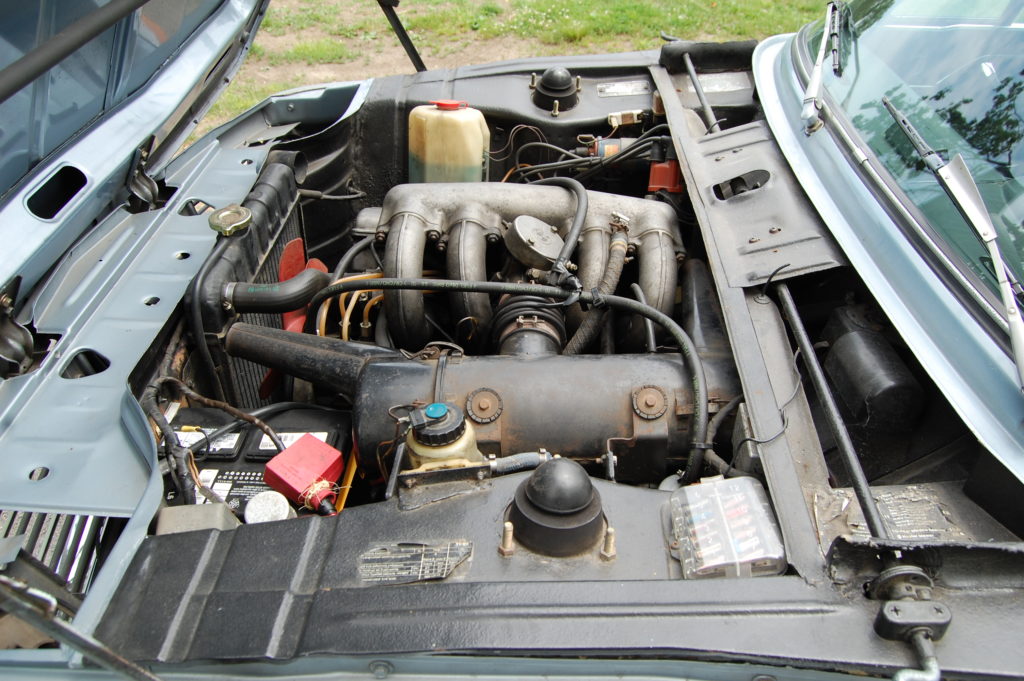
Yikes! Fuel hoses were growing like vines in Jumanji!
All of this looked just awful, so I corrected it.
The little bracket that holds the fuel filter next to the radiator has long been NLA, but I found a used one on eBay. I then repositioned the fuel filter and cut the fuel hoses to the correct length. My Lotus Europa has had a tii battery in it for years, so I swapped it for the Group 22 battery which fit the Lotus perfectly.
The battery cables were surprisingly challenging; the positive cableis NLA, but folks use an E21 320i cable and cut off the extra positive wire going to the alternator. I found one on eBay, but I’m still waiting for delivery. The original braided negative cable is available, but it’s a bit pricey. I found that I had a braided negative cable in my parts stash, but the small ground strap to the body of the car had corroded off. I sourced a thin-braided Dorman ground strap on Amazon and called it close enough.

The correct battery cables aren’t on yet in this photograph, but the fuel hoses and battery orientation have been corrected.
Other slippery-slope stuff included finding that the two cloth-braided hoses that gravity-feed brake fluid from the reservoir to the master cylinder were sweating brake fluid. Since I needed to bleed the system anyway due to the new rear wheel cylinders and clutch hydraulics, I siphoned all of the fluid out of the reservoir, then replaced these two hoses.
I found that one of the front wheel bearings had play in it that couldn’t be adjusted without making it tighter than I was comfortable with, and the other one sounded slightly crunchy. Initially, I felt that this fell outside the scope of my just-address-the-tip-of-the-iceberg mission, but the idea of including this in part of the description of the car rather than just fixing it didn’t sit right with me, so I replaced the bearings.
Then there were the wheels.
As I mentioned last week, the car had E30 bottlecaps on it. These were a desirable “+1” mod back in the late ’80s, but now their presence is viewed similarly to finding an out-of-place non-original radio in the console. Fortunately, Chris found the original steel wheels in her basement. These 5×13-inch non-slotted steelies were used only on the ’72 and ’73 tii, and these days they are as rare as hen’s teeth. Since the E30 bottlecaps were wearing eighteen-year-old dry-rotted Pirelli P4000s and thus needed new tires anyway to present the car as drivable, I convinced Chris to let me resurrect the steelies.
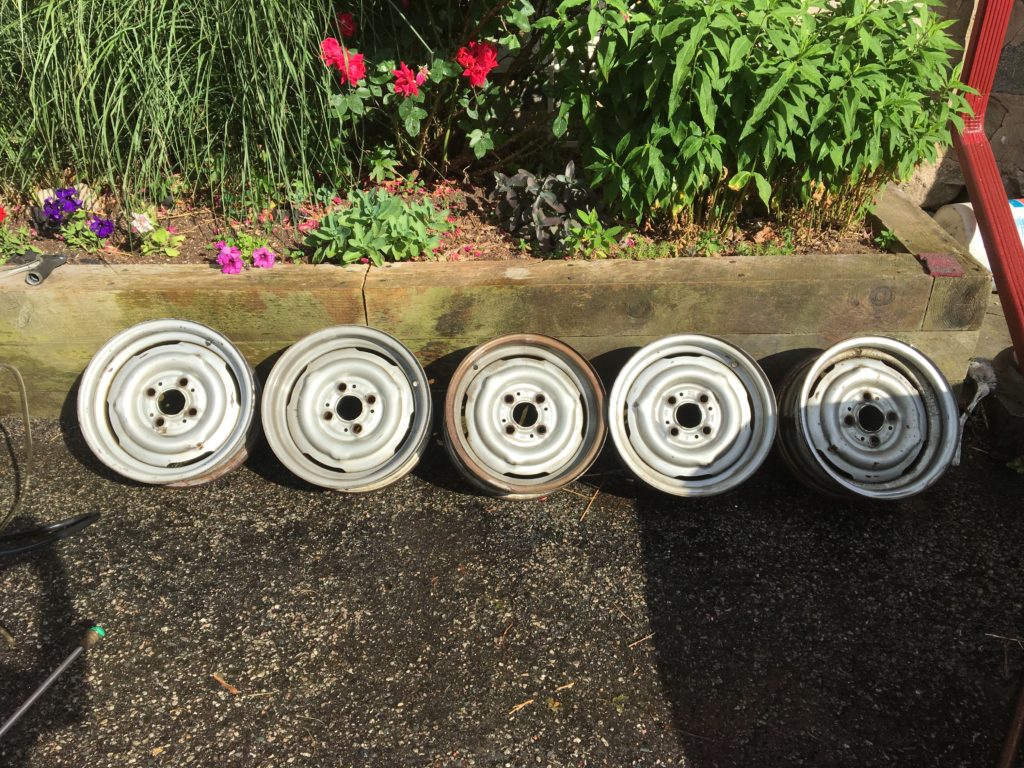
The steelies after pressure-washing.
This is one of those rabbit holes one can do as deeply down as one wants (e.g, do you sandblast and paint, or have them professionally refinished, or is it best to leave that choice, along with tires, to the next owner?), but I spoke with my friend Paul Wegweiser, and he said he gets good results by just cleaning the wheels, scuffing them with Scotch-Brite, and painting them. A blast with the pressure washer removed the grime, and a pass with a drill with a wire brush wheel took off nearly all corrosion that was a cause for concern. One of the wheels had enough corrosion on one part of the inner lip that I was concerned that a tire wouldn’t seal, so after wire-brushing it thoroughly, I filled the divots with some metal paste, then sanded it smooth.
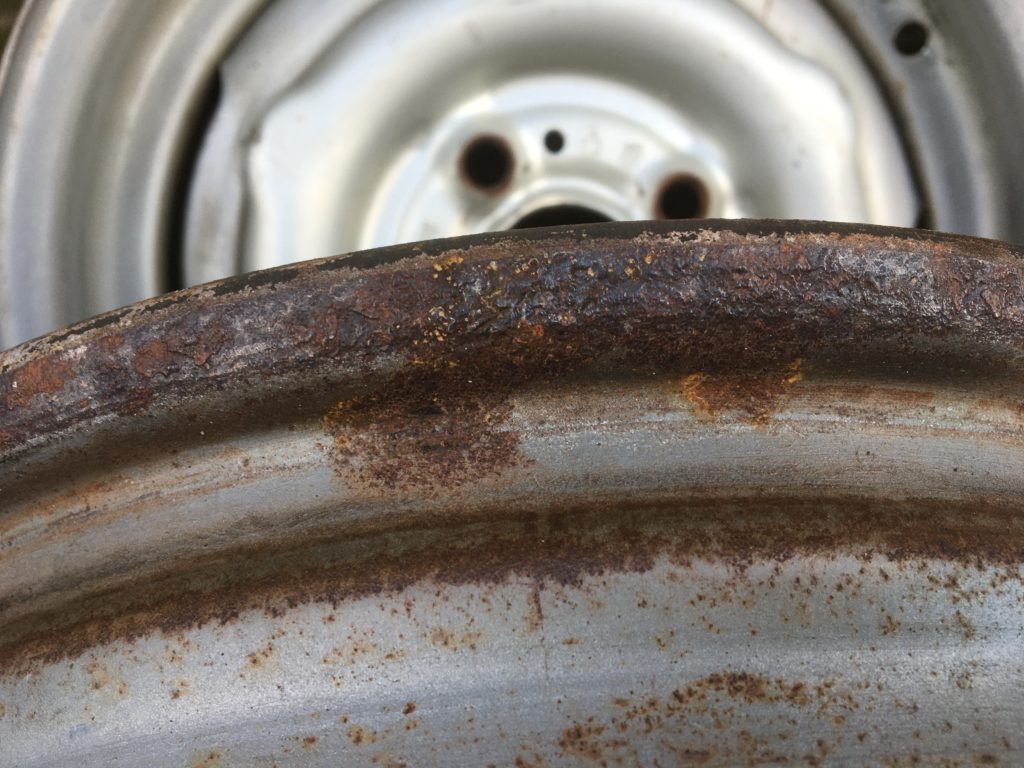
Fortunately, this was the worst of it, and it was just one spot on one wheel.

Five freshly-painted tii-specific 5×13 steelies.
For tires, I know that folks rave about Pirelli CN36s, but man, they’re pricey! The Tire Rack was out of the Kumho Solus 185/70-13s that many peopleuse but don’t love. I almost bought some $60 Laufenn tires on Amazon, but it seemed that they bordered on being apology-worthy, so I bought the Kumhos from a vendor on eBay. They should arrive next week. With mounting and balancing and a couple of hours of my time, Chris will get out of the wheel swap for under $500, which seems to me well worth doing in terms of the resale value of the car.
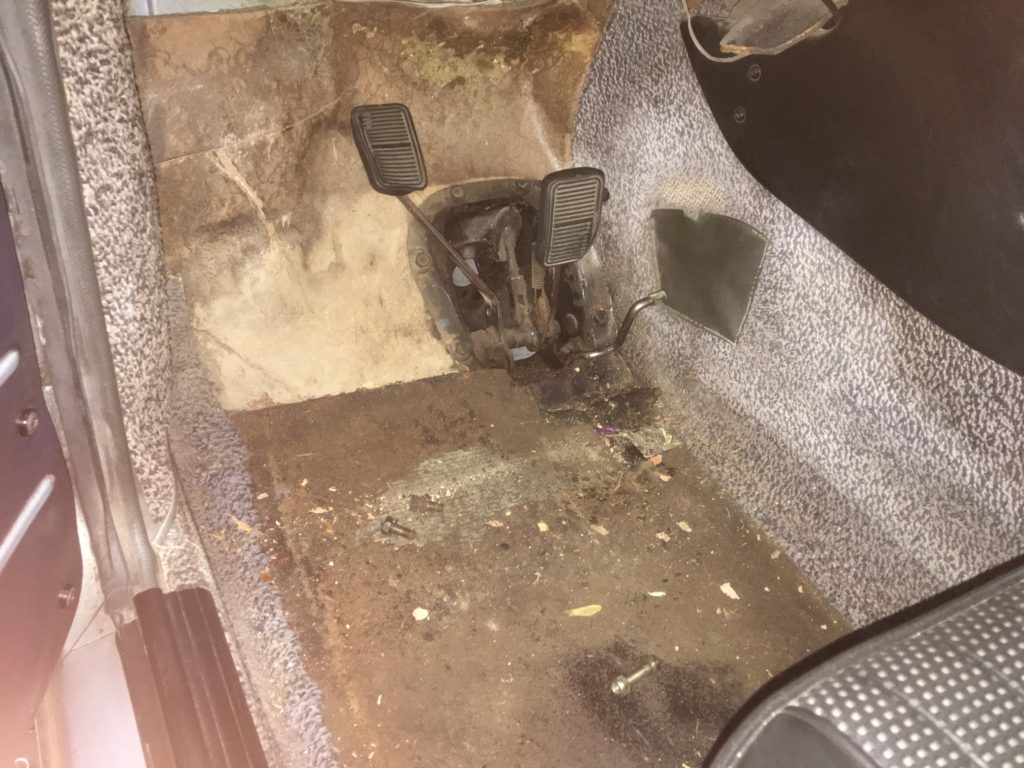
I really, REALLY need the salt-and-pepper rug piece that covers this.So: I’m closing in on having the car ready to photograph it for Bring a Trailer. However, I’m still short one piece, and that’s the section of original salt-and-pepper rug in the driver’s footwell that covers both the floor and the pedal box. If anyone has a used piece they’ll sell, please contact me at rsiegel@roundel.org.—Rob Siegel
Rob’s new book, The Best of The Hack Mechanic, is available here on Amazon, as are his seven other books. Signed copies can be ordered directly from Rob here.





















